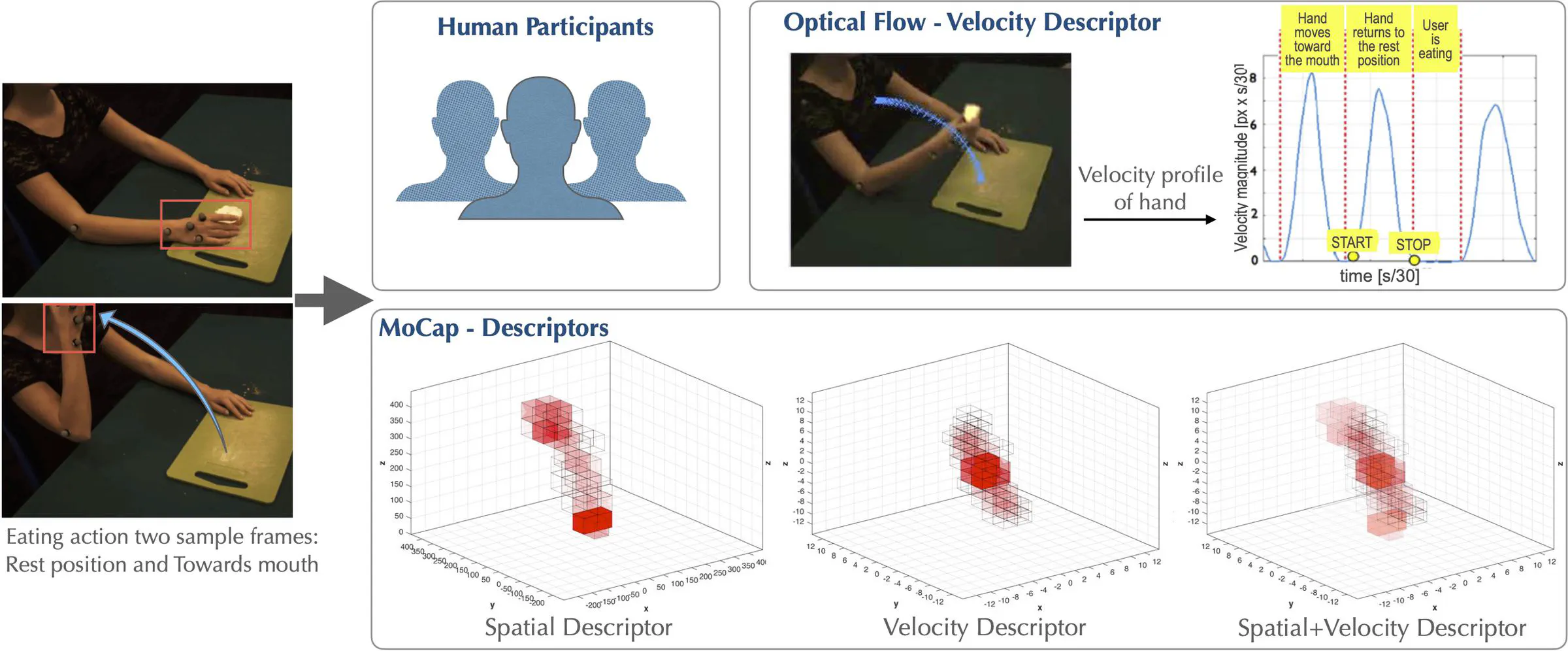Kinematic Primitives in Action Similarity Judgments: A Human-Centered Computational Model
January 30, 2023·
 ,
,
,
,
,
,
,
,
,
,
,
,
,
,
,
,
,
,
,
,
Vipul Nair
Paul Hemeren
Alessia Vignolo
Nicoletta Noceti
Elena Nicora
Alessandra Sciutti
Francesco Rea
Erik Billing
Mehul Bhatt
Francesca Odone
Giulio Sandini

Abstract
This article investigates the role that kinematic features play in human action similarity judgments. The results of three experiments with human participants are compared with the computational model that solves the same task. The chosen model has its roots in developmental robotics and performs action classification based on learned kinematic primitives. The comparative experimental results show that both model and human participants can reliably identify whether two actions are the same or not. Specifically, most of the given actions could be similarity judged based on very limited information from a single feature domain (velocity or spatial). Both velocity and spatial features were however necessary to reach a level of human performance on evaluated actions. The experimental results also show that human performance on an action identification task indicated that they clearly relied on kinematic information rather than on action semantics. The results show that both the model and human performance are highly accurate in an action similarity task based on kinematic-level features, which can provide an essential basis for classifying human actions.
Type
Publication
IEEE Transactions on Cognitive and Developmental Systems, vol. 15, no. 4, 2023